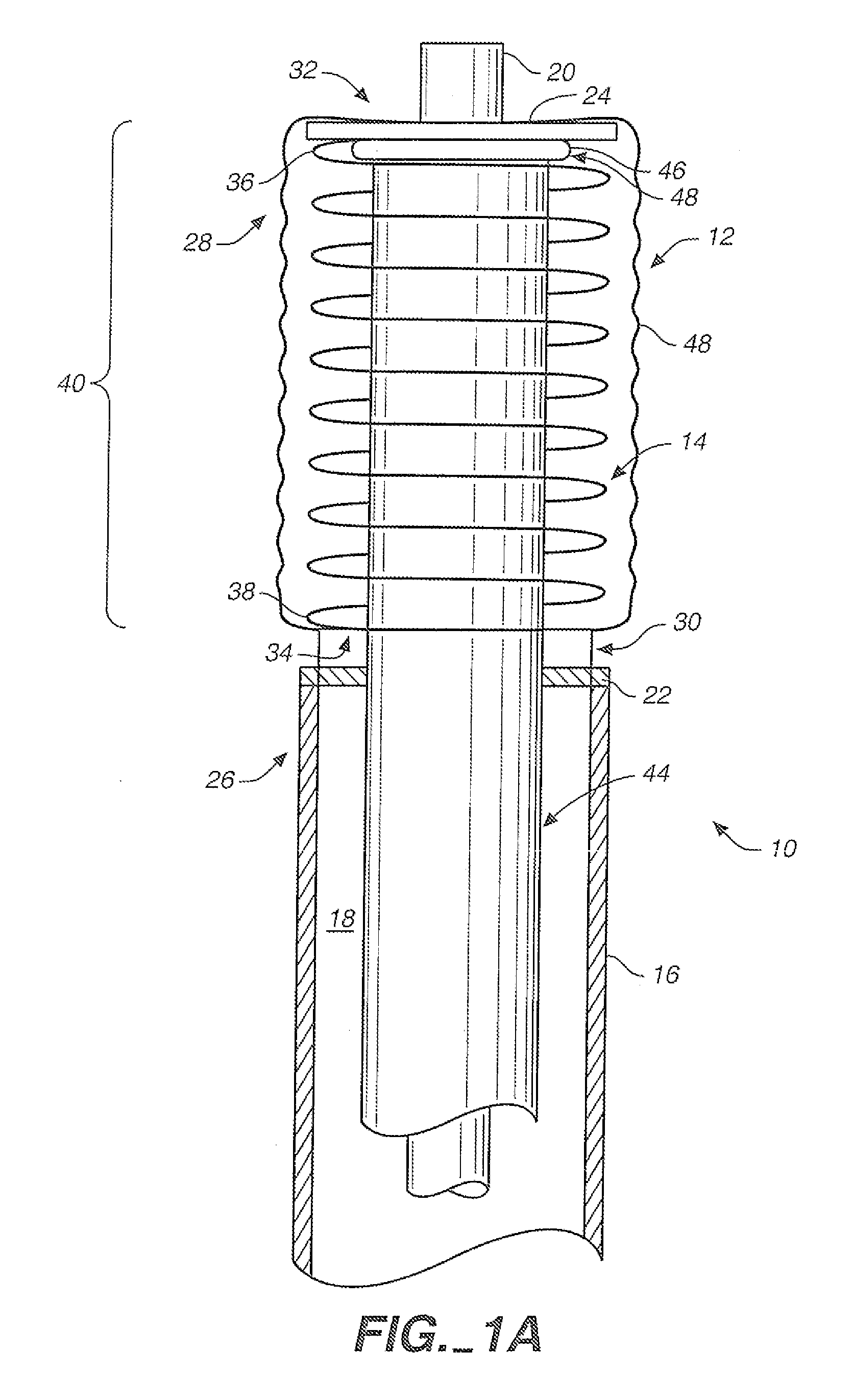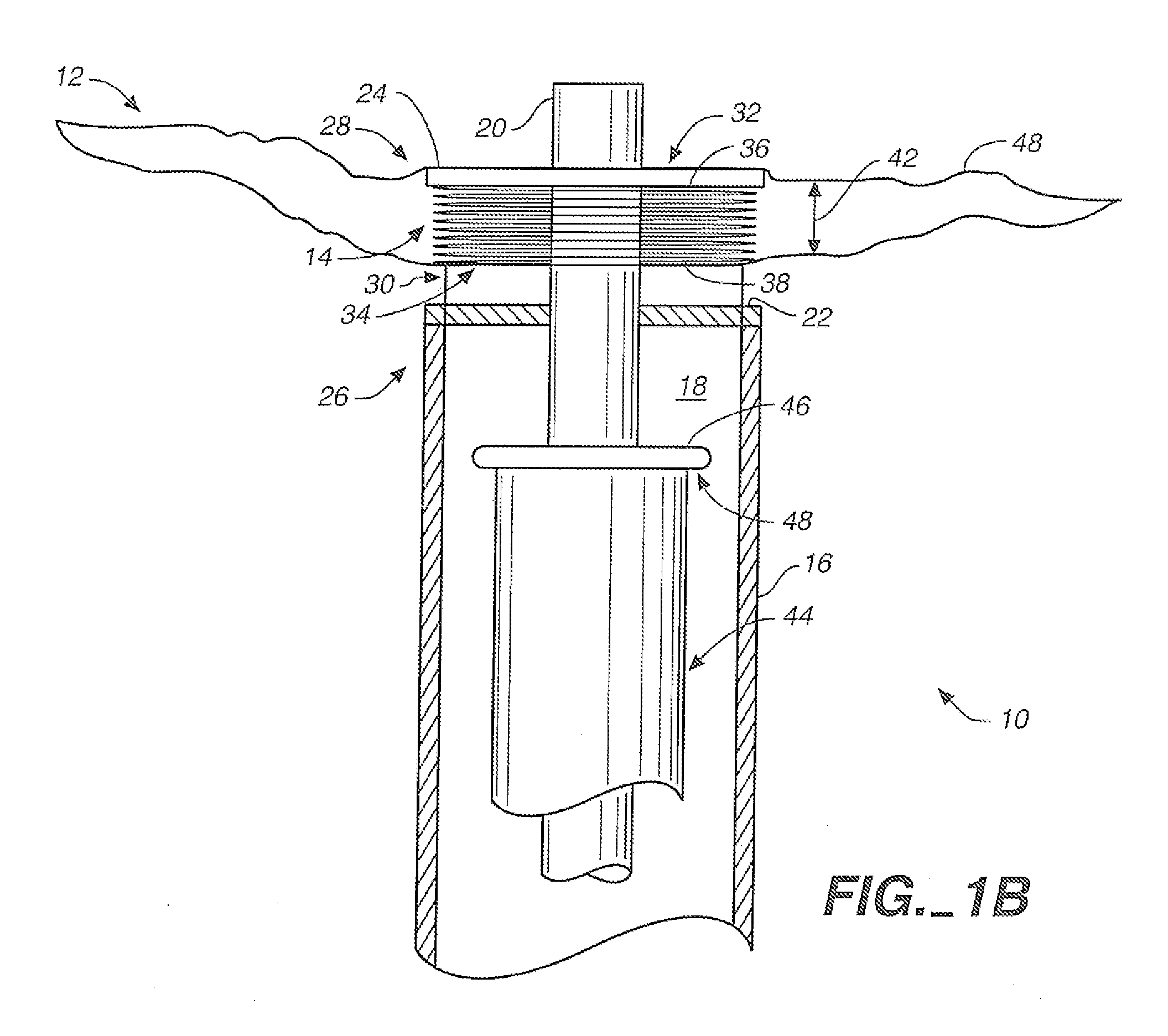Aneurysm neck obstruction device
an aneurysm and obstruction technology, applied in the field of medical treatment devices, can solve the problems of risk of overfilling the sac, and consequent migration of embolic agents into the parent vessel, and generating undesirable additional pressure,
- Summary
- Abstract
- Description
- Claims
- Application Information
AI Technical Summary
Problems solved by technology
Method used
Image
Examples
Embodiment Construction
[0040]FIGS. 1A and 1B are partially broken away side views of an aneurysm treatment device 10 in accordance with an embodiment of the present invention. FIG. 1A shows treatment device 10 with a neck bridge 12 in a delivery configuration, while FIG. 1B shows device 10 with collapsible neck bridge 12 in a deployed configuration. The same reference numerals used in FIG. 1A are also used in FIG. 1B for elements that are the same or similar in both drawings.
[0041]The FIG. 1A delivery configuration is illustratively designed to facilitate smooth and efficient intravascular delivery of treatment device 10 to an internal location proximate an aneurysm. In the FIG. 1A delivery configuration, collapsible neck bridge 12 is of a size and overall flexibility to accommodate effective and efficient intravascular delivery to an aneurysm site. Also, when neck bridge 12 is in the delivery configuration, it is of a size and overall flexibility to be deliverable through a tubular delivery device, such ...
PUM
 Login to View More
Login to View More Abstract
Description
Claims
Application Information
 Login to View More
Login to View More - R&D
- Intellectual Property
- Life Sciences
- Materials
- Tech Scout
- Unparalleled Data Quality
- Higher Quality Content
- 60% Fewer Hallucinations
Browse by: Latest US Patents, China's latest patents, Technical Efficacy Thesaurus, Application Domain, Technology Topic, Popular Technical Reports.
© 2025 PatSnap. All rights reserved.Legal|Privacy policy|Modern Slavery Act Transparency Statement|Sitemap|About US| Contact US: help@patsnap.com



